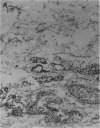Abstract
The sum of the evidence supports the necessity to continue to investigate the developmental effects of estrogenic and antiestrogenic compounds when exposure occurs early in life. Additional studies will answer questions relevant to the molecular definition of the developmental or carcinogenic effects of estrogens such as hormone-induced gene alterations. These studies also support the need to use the neonatal mouse model to demonstrate the consequences of reproductive and nonreproductive stem-cell exposure to estrogenic compounds.
Full text
PDF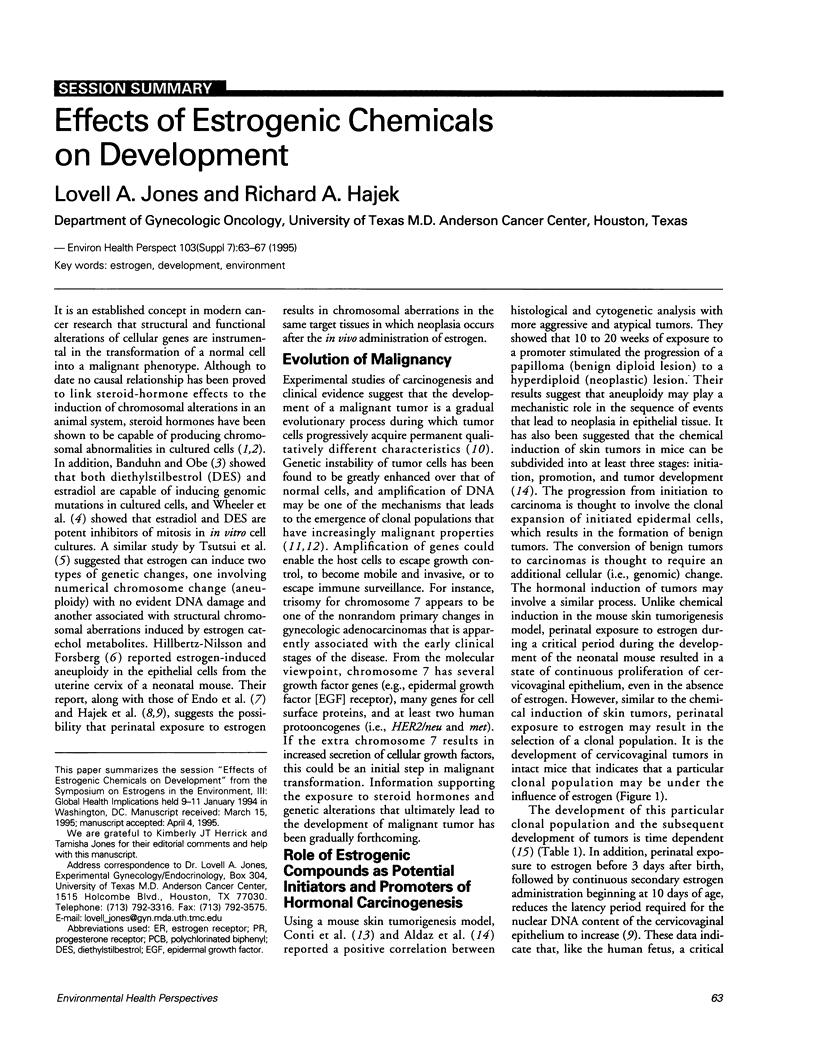
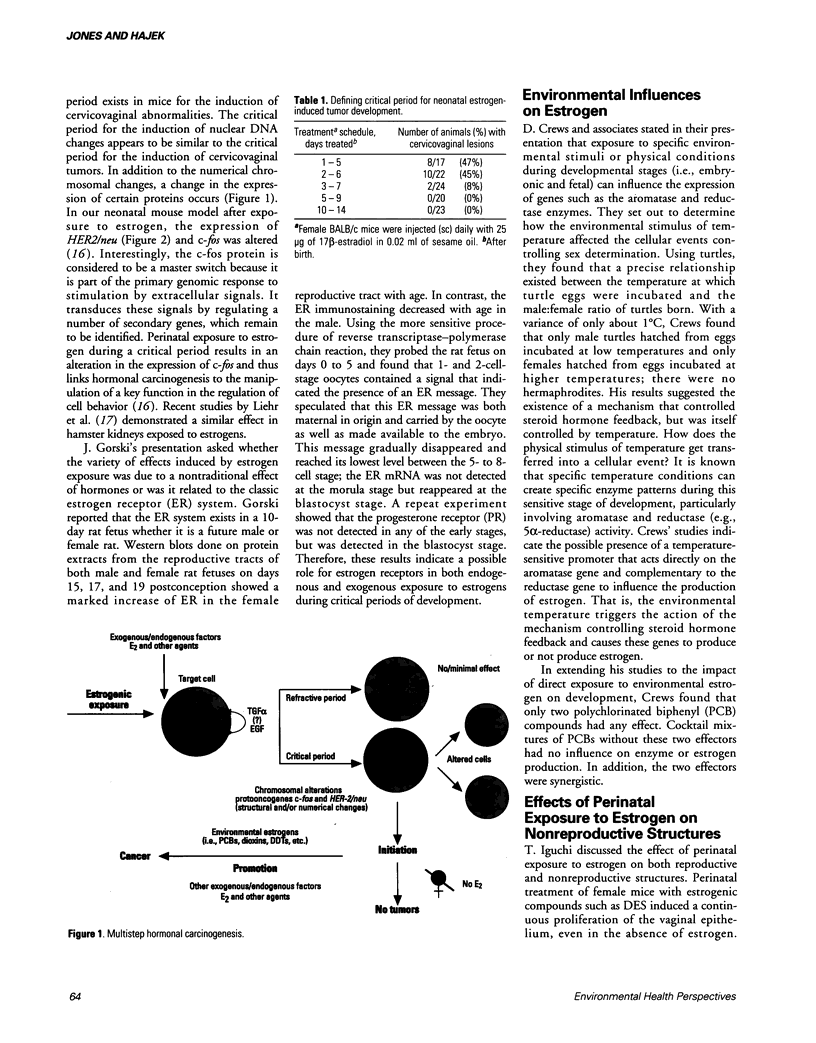
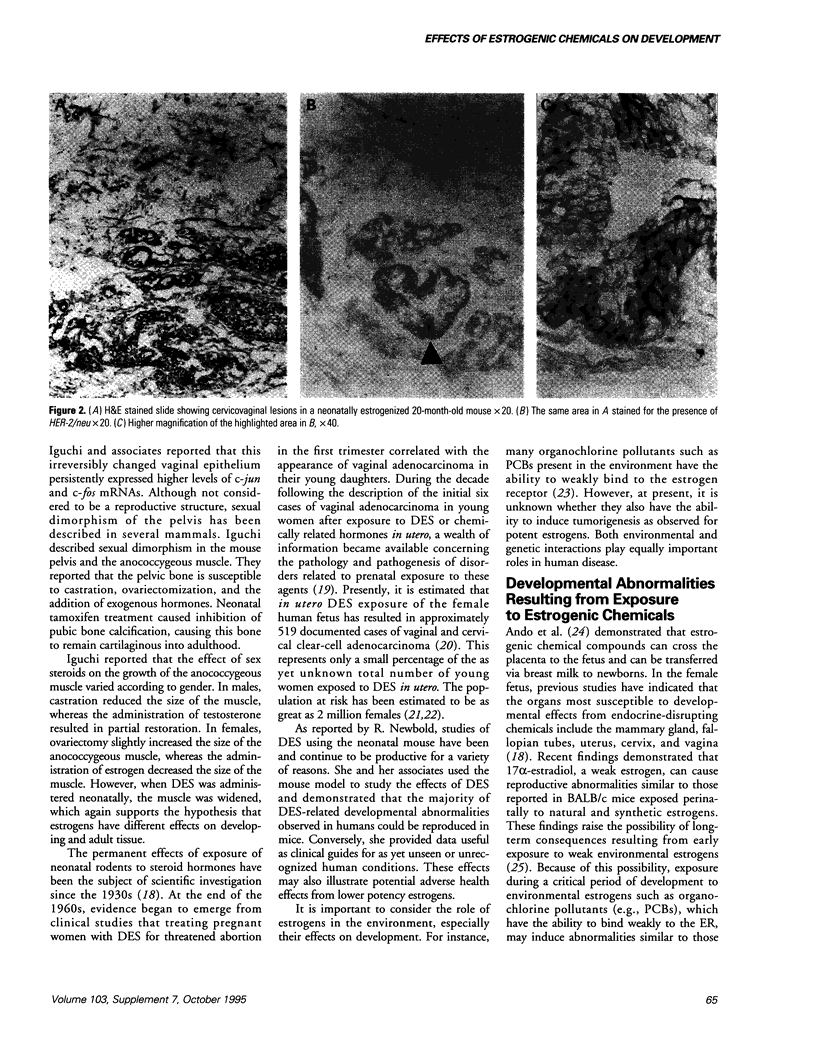
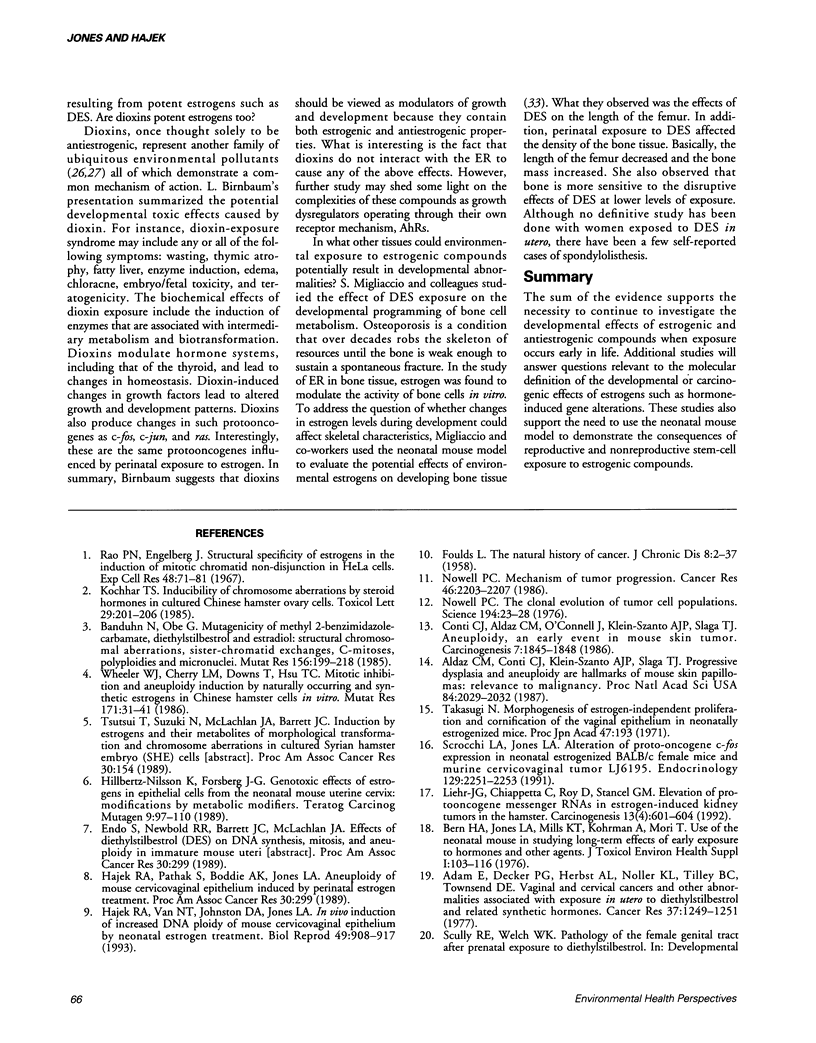
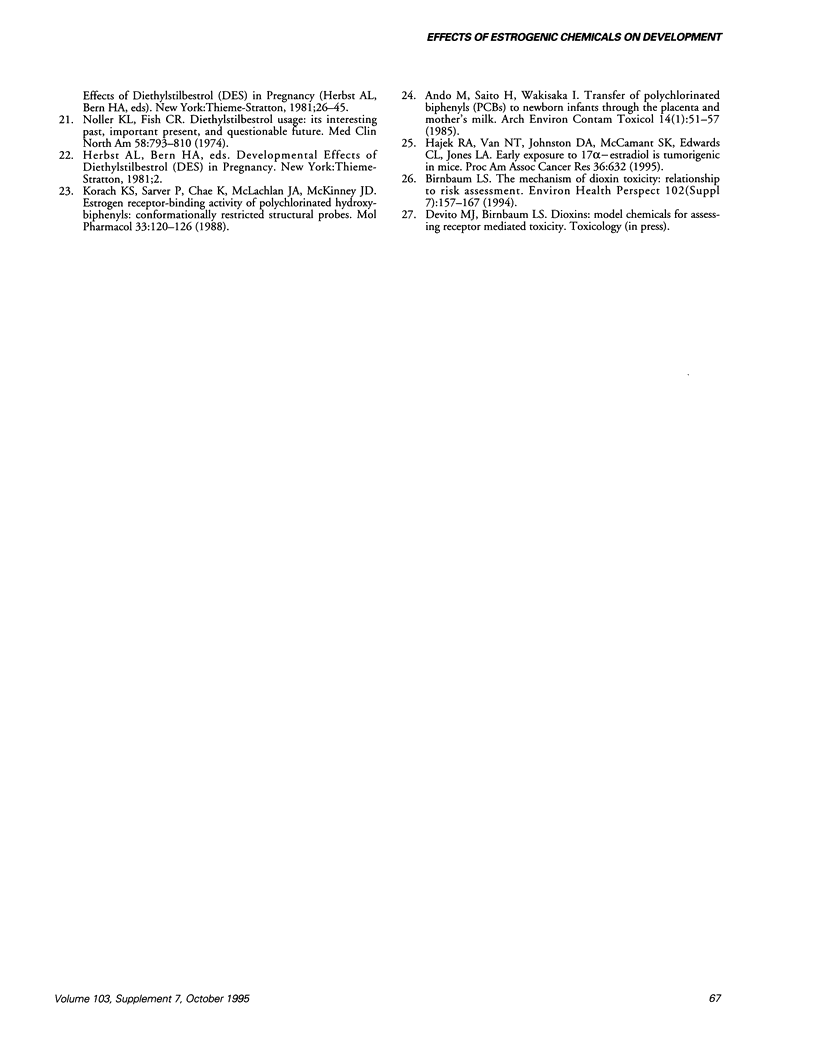
Images in this article
Selected References
These references are in PubMed. This may not be the complete list of references from this article.
- Adam E., Decker D. G., Herbst A. L., Noller K. L., Tilley B. C., Townsend D. E. Vaginal and cervical cancers and other abnormalities associated with exposure in utero to diethylstilbestrol and related synthetic hormones. Cancer Res. 1977 Apr;37(4):1249–1251. [PubMed] [Google Scholar]
- Aldaz C. M., Conti C. J., Klein-Szanto A. J., Slaga T. J. Progressive dysplasia and aneuploidy are hallmarks of mouse skin papillomas: relevance to malignancy. Proc Natl Acad Sci U S A. 1987 Apr;84(7):2029–2032. doi: 10.1073/pnas.84.7.2029. [DOI] [PMC free article] [PubMed] [Google Scholar]
- Ando M., Saito H., Wakisaka I. Transfer of polychlorinated biphenyls (PCBs) to newborn infants through the placenta and mothers' milk. Arch Environ Contam Toxicol. 1985 Jan;14(1):51–57. doi: 10.1007/BF01055761. [DOI] [PubMed] [Google Scholar]
- Banduhn N., Obe G. Mutagenicity of methyl 2-benzimidazolecarbamate, diethylstilbestrol and estradiol: structural chromosomal aberrations, sister-chromatid exchanges, C-mitoses, polyploidies and micronuclei. Mutat Res. 1985 Jun;156(3):199–218. doi: 10.1016/0165-1218(85)90065-5. [DOI] [PubMed] [Google Scholar]
- Bern H. A., Jones L. A., Mills K. T. Use of the neonatal mouse in studying long-term effects of early exposure to hormones and other agents. J Toxicol Environ Health Suppl. 1976;1:103–116. [PubMed] [Google Scholar]
- Birnbaum L. S. The mechanism of dioxin toxicity: relationship to risk assessment. Environ Health Perspect. 1994 Nov;102 (Suppl 9):157–167. doi: 10.1289/ehp.94102s9157. [DOI] [PMC free article] [PubMed] [Google Scholar]
- Conti C. J., Aldaz C. M., O'Connell J., Klein-Szanto A. J., Slaga T. J. Aneuploidy, an early event in mouse skin tumor development. Carcinogenesis. 1986 Nov;7(11):1845–1848. doi: 10.1093/carcin/7.11.1845. [DOI] [PubMed] [Google Scholar]
- FOULDS L. The natural history of cancer. J Chronic Dis. 1958 Jul;8(1):2–37. doi: 10.1016/0021-9681(58)90039-0. [DOI] [PubMed] [Google Scholar]
- Hajek R. A., Nguyen T. V., Johnston D. A., Jones L. A. In vivo induction of increased DNA ploidy of mouse cervicovaginal epithelium by neonatal estrogen treatment. Biol Reprod. 1993 Nov;49(5):908–917. doi: 10.1095/biolreprod49.5.908. [DOI] [PubMed] [Google Scholar]
- Hillbertz-Nilsson K., Forsberg J. G. Genotoxic effects of estrogens in epithelial cells from the neonatal mouse uterine cervix: modifications by metabolic modifiers. Teratog Carcinog Mutagen. 1989;9(2):97–110. doi: 10.1002/tcm.1770090205. [DOI] [PubMed] [Google Scholar]
- Kochhar T. S. Inducibility of chromosome aberrations by steroid hormones in cultured Chinese hamster ovary cells. Toxicol Lett. 1985 Dec;29(2-3):201–206. doi: 10.1016/0378-4274(85)90042-6. [DOI] [PubMed] [Google Scholar]
- Korach K. S., Sarver P., Chae K., McLachlan J. A., McKinney J. D. Estrogen receptor-binding activity of polychlorinated hydroxybiphenyls: conformationally restricted structural probes. Mol Pharmacol. 1988 Jan;33(1):120–126. [PubMed] [Google Scholar]
- Liehr J. G., Chiappetta C., Roy D., Stancel G. M. Elevation of protooncogene messenger RNAs in estrogen-induced kidney tumors in the hamster. Carcinogenesis. 1992 Apr;13(4):601–604. doi: 10.1093/carcin/13.4.601. [DOI] [PubMed] [Google Scholar]
- Noller K. L., Fish C. R. Diethylstilbestrol usage: Its interesting past, important present, and questionable future. Med Clin North Am. 1974 Jul;58(4):793–810. doi: 10.1016/s0025-7125(16)32122-8. [DOI] [PubMed] [Google Scholar]
- Nowell P. C. Mechanisms of tumor progression. Cancer Res. 1986 May;46(5):2203–2207. [PubMed] [Google Scholar]
- Nowell P. C. The clonal evolution of tumor cell populations. Science. 1976 Oct 1;194(4260):23–28. doi: 10.1126/science.959840. [DOI] [PubMed] [Google Scholar]
- Rao P. N., Engelberg J. Structural specificity of estrogens in the induction of mitotic chromatid non-disjunction in HeLa cells. Exp Cell Res. 1967 Oct;48(1):71–81. doi: 10.1016/0014-4827(67)90277-7. [DOI] [PubMed] [Google Scholar]
- Scrocchi L. A., Jones L. A. Alteration of proto-oncogene c-fos expression in neonatal estrogenized BALB/c female mice & murine cervicovaginal tumor LJ6195. Endocrinology. 1991 Oct;129(4):2251–2253. doi: 10.1210/endo-129-4-2251. [DOI] [PubMed] [Google Scholar]
- Wheeler W. J., Cherry L. M., Downs T., Hsu T. C. Mitotic inhibition and aneuploidy induction by naturally occurring and synthetic estrogens in Chinese hamster cells in vitro. Mutat Res. 1986 Jul;171(1):31–41. doi: 10.1016/0165-1218(86)90006-6. [DOI] [PubMed] [Google Scholar]



